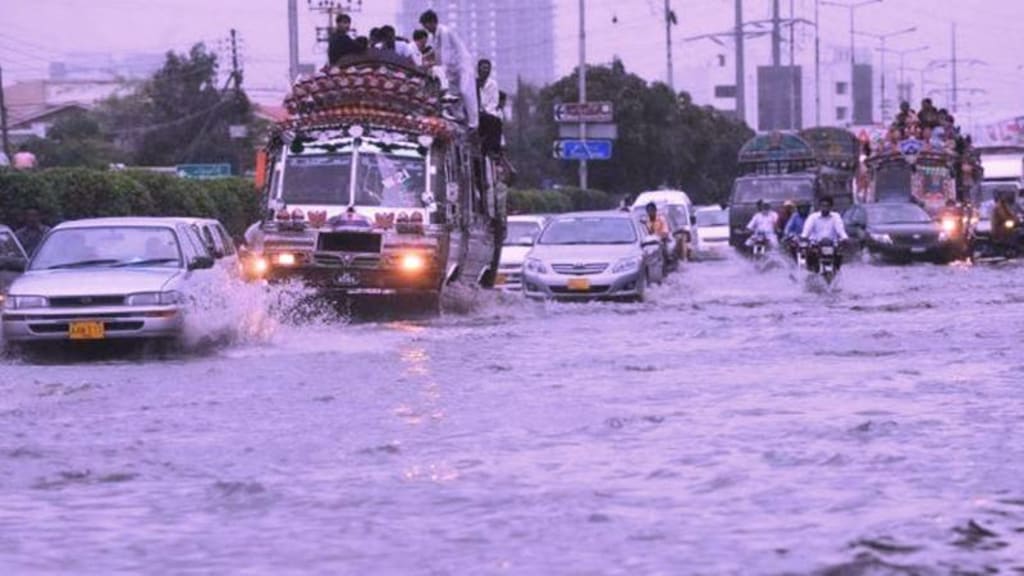South Asian Moon Soon Rain system
Moon soon rain system

Moon soon Rain
The South Asian monsoon is a critical climatic phenomenon that profoundly influences the weather patterns, agriculture, and economies of the region. The monsoon system involves a seasonal reversal of winds and brings significant rainfall to countries such as India, Pakistan, Bangladesh, Nepal, Bhutan, Sri Lanka, and parts of Southeast Asia.
#### Mechanism of the Monsoon
**Formation and Onset:**
1. **Differential Heating**:
- During the summer months, the Indian subcontinent heats up more quickly than the surrounding oceans, creating a low-pressure area over the land and a high-pressure area over the Indian Ocean.
2. **Wind Patterns**:
- The shift in pressure causes moist air from the Indian Ocean to flow towards the land. This southwesterly wind brings moisture-laden clouds to the subcontinent.
3. **Intertropical Convergence Zone (ITCZ)**:
- The ITCZ moves northwards, carrying warm and moist air masses that contribute to the monsoon rains.
4. **Bay of Bengal and Arabian Sea Branches**:
- The monsoon winds split into two branches: the Bay of Bengal branch and the Arabian Sea branch. Both branches contribute to the rainfall over the Indian subcontinent.
**Progression:**
1. **Arrival**:
- The monsoon typically reaches the southwestern coast of India (Kerala) around the beginning of June and progresses northward, covering the entire subcontinent by mid-July.
2. **Distribution**:
- Regions like the Western Ghats, Northeastern India, and the Himalayan foothills receive heavy rainfall.
- Rain shadow areas, such as parts of the Deccan Plateau and the Thar Desert, receive less precipitation.
#### Impact on South Asia
**Agriculture:**
- The monsoon is essential for agriculture in South Asia, providing the majority of the annual rainfall needed for crops like rice, wheat, sugarcane, and pulses.
- A good monsoon season leads to a bountiful harvest, boosting food production and supporting the livelihoods of millions of farmers.
- Conversely, a weak monsoon can lead to drought, affecting crop yields and food security.
**Economy:**
- The monsoon has a significant impact on the economies of South Asian countries, particularly in sectors like agriculture, water resources, and hydroelectric power.
- Good monsoon rains can enhance agricultural output, stabilize food prices, and contribute to economic growth.
- Poor monsoon performance can lead to reduced agricultural output, higher food prices, and economic challenges.
**Environment:**
- Monsoon rains are crucial for replenishing groundwater levels, filling reservoirs, and sustaining rivers and lakes.
- They support diverse ecosystems and biodiversity in the region.
- Excessive rainfall can lead to flooding, landslides, and other natural disasters, posing risks to life, property, and infrastructure.
#### Challenges and Risks
**Flooding:**
- Heavy monsoon rains can cause rivers to overflow, leading to widespread flooding in low-lying areas. This results in loss of life, displacement of people, and damage to crops and infrastructure.
**Drought:**
- Inconsistent monsoon rains or a delayed onset can lead to drought conditions, severely impacting agriculture and water availability.
**Cyclones:**
- The monsoon season is also associated with tropical cyclones in the Bay of Bengal and the Arabian Sea, which can cause additional damage through high winds, storm surges, and heavy rainfall.
**Climate Change:**
- Climate change is affecting the monsoon patterns, making them more unpredictable and extreme. This increases the variability in the onset, intensity, and duration of monsoon rains, posing challenges for agricultural planning and disaster management.
#### Future Prospects
**Sustainable Practices:**
- Adopting sustainable agricultural practices, improving water management, and building resilient infrastructure are essential to cope with the challenges posed by monsoon variability and climate change.
**Research and Forecasting:**
- Enhancing meteorological research and improving monsoon forecasting can help in better preparation and response to monsoon-related risks.
**International Cooperation:**
- Regional cooperation and sharing of resources and knowledge among South Asian countries can strengthen efforts to manage the impacts of the monsoon and ensure the well-being of their populations.
### Conclusion
The South Asian monsoon is a vital climatic event that sustains agriculture, replenishes water resources, and influences the lives of millions of people. Understanding its mechanisms, impacts, and challenges is crucial for developing strategies to maximize its benefits and mitigate its risks.
About the Creator
Enjoyed the story? Support the Creator.
Subscribe for free to receive all their stories in your feed. You could also pledge your support or give them a one-off tip, letting them know you appreciate their work.






Comments (1)
Nicely done. Thanks for sharing it.